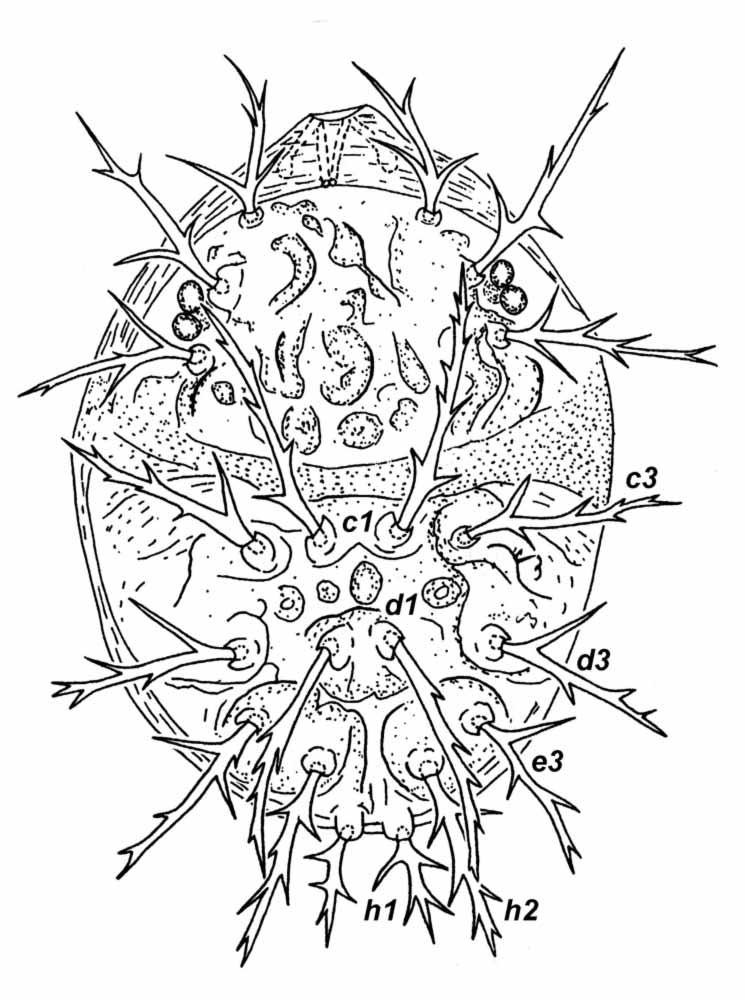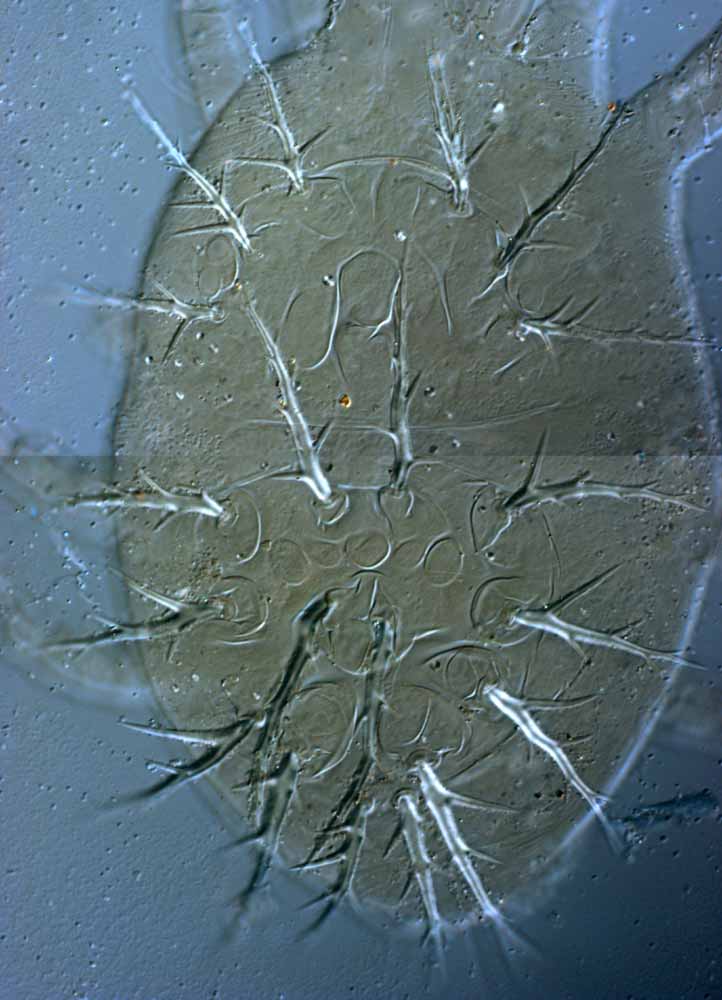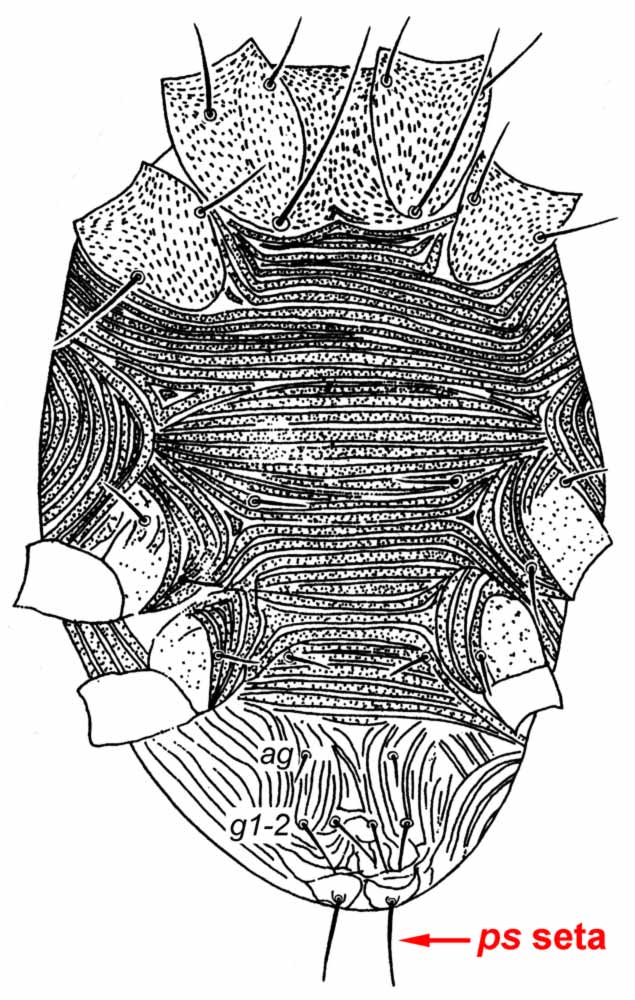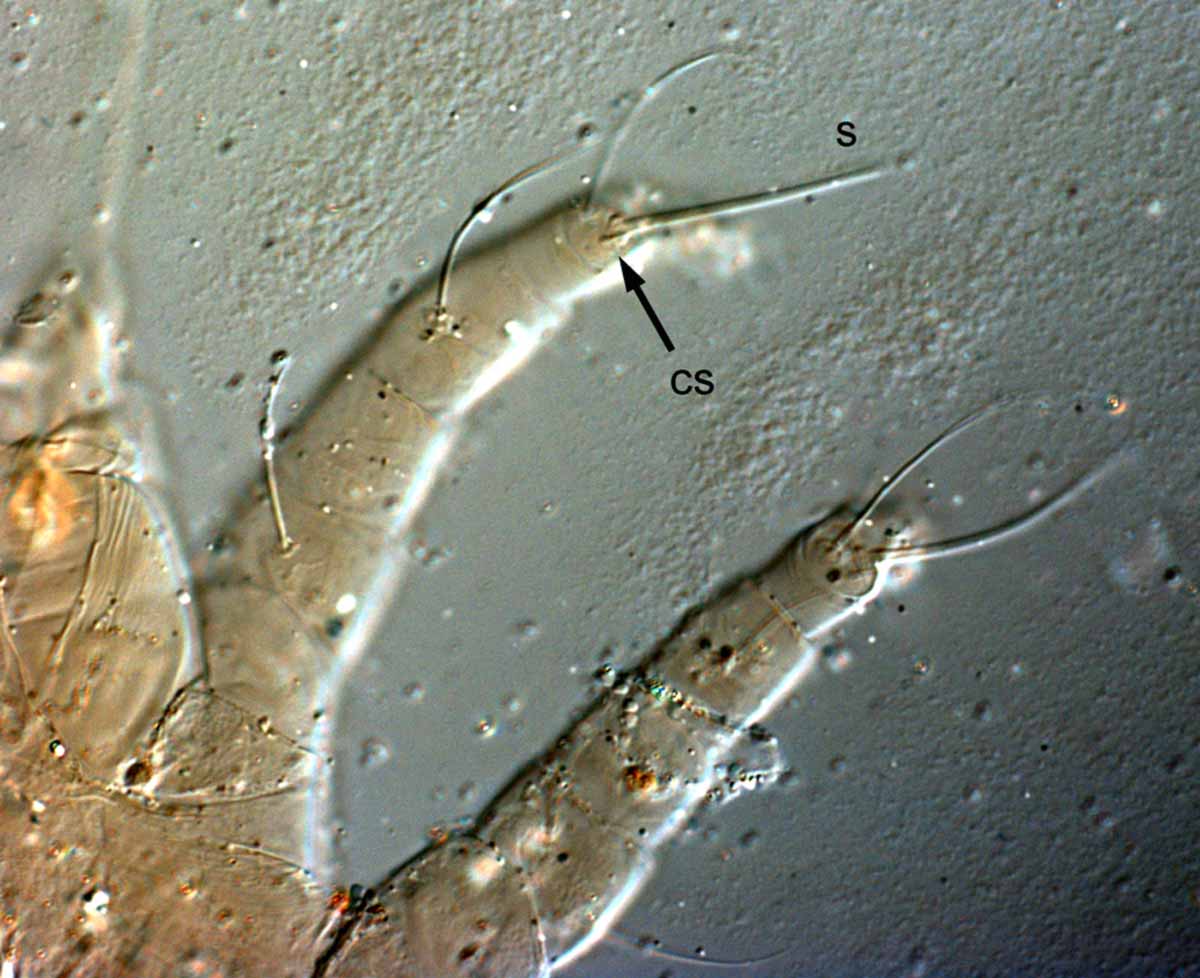Krugeria
|
Fig. 1. Krugeria ramosa female dorsum (after Meyer 1979). |
|
Fig. 2. Krugeria ramosa female dorsum (paratype). |
|
Fig. 3. Krugeria ramosa female venter - indicating one pair ps setae (after Meyer 1979). |
|
Fig. 4. Krugeria ramosa female tarsi I and II - solenidion long (s) and companion seta minute (cs). |
Key characters
- c2, d2, e1, e2, f2, f3 absent (Fig. 1)
- no setae in f series present
- h2 not elongate
- distinct long heavily barbed (= ramose) dorsal setae (Figs. 1-2)
- anterior margin of prodorsum smoothly rounded, without notch or projection
- ventral, genital and anal plates not developed
- 1 pair ps setae (Fig. 3)
- 1 segmented palp
- claws resemble empodium (pad-like, not claw-like)
- solenidia on tarsus I-II long, and companion seta minute (Fig. 4)
Similar taxa
Obduloides - does not have strongly ramose dorsal setae
Number of species
One - K. ramosa
Authority
Meyer
Distribution
South Africa
Hosts
Grewia bicolor (Tiliaceae)





